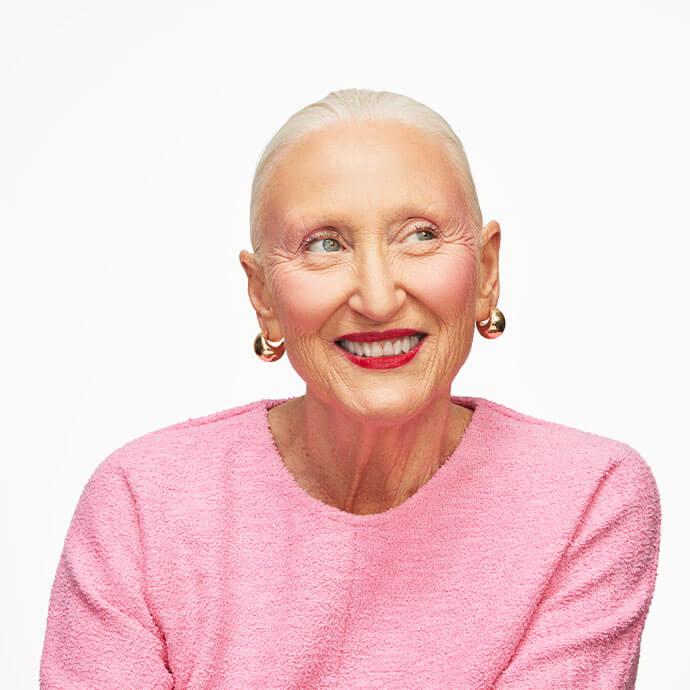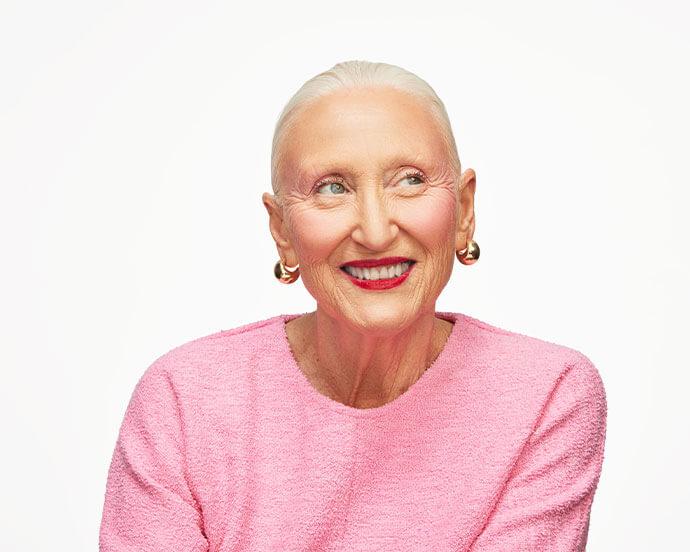Here’s How long a Retinol Purge Lasts and How to Deal



Runa Bhattacharya


Introducing retinol into your skin care routine can be a total game changer. Whether you’re looking to fight fine lines and wrinkles, smooth skin texture, reduce the appearance of large pores, minimize blackheads, stimulate collagen production, or kick stubborn acne breakouts to the curb, retinol is an ingredient that can truly help you achieve your clear, youthful, healthy skin goals. However, starting retinol can be a lot like starting a new relationship. It begins with a slow introduction: You enter the honeymoon phase where everything is perfection, and then just as you start to get comfy, bam—you see your skin start to do some meh things and now the vibes are way off. We’re talking retinol purge (aka the retinol uglies), which are made up of some not-so-fun side effects like breakout flare-ups, redness, dryness, irritation, peeling, and flaking.
While we know that retinol is an anti aging, acne-fighting phenom, getting your skin to adjust to the ingredient, regardless of your skin type, can be downright difficult to deal with. And while the standard advice may be to stick it out (because it will pass), we’re all human and just want to get it over with too! However, patience is key when it comes to skin purging, so even though it may look like your skin is doing the exact opposite of what you wanted it to do, experts say that retinol purge is normal and should be temporary. But really though, how long should retinol purge last and what can we do to deal with one? We talked to dermatologists Anthony Rossi Jr., MD, and Joshua Zeichner, MD, for the real insight.


It's about glam time you treated yourself.
MEET THE EXPERT
Anthony Rossi Jr., MD, is a board-certified dermatologist and founder of Dr. Rossi Derm MD. He is recognized internationally as a leading expert on sensitive skin.
Joshua Zeichner, MD, is a New York City-based dermatologist. He is the director of cosmetic and clinical research at Mount Sinai Hospital in New York City.
What Is Retinol Purge?
“Retinol is a derivative of retinoids, which are forms of vitamin A. Retinoids are known to help cells differentiate and cause ‘cell turnover.’ Since retinols are weaker than their prescription counterparts, they are available over the counter,” says Dr. Rossi.
“Due to this cell turnover, both retinols and retinoids can often irritate skin. People refer to this as the purge when retinol is used on areas of the face or body that have more delicate, thinner skin,” says Dr. Rossi. So we know that retinol increases skin cell turnover (which is part of the reason it’s so great for anti-aging), but this increase in cell turnover is what can cause our skin to go through a purging phase to begin with. Here’s a cool visual. “Think of topical retinoids like pipe cleaners. They prevent cells from sticking together within the wall of the follicle and help bring out blockages from deep in the pores. When this process happens all at once, it is referred to as a purge. Breakouts on the face appear to get worse as contents of the pores are brought to the skin's surface all at once. This is a necessary evil to go through as blockages have only one place to go, which is out,” says Dr. Zeichner.
How Long Does the Retinol Purge Last?
The facts? “The purging process lasts somewhere between two and four weeks, depending on the person. Once you start to experience a purge, the most important thing to do is to continue treating, because if you stop, it will have been for nothing,” advises Dr. Zeichner. Tough, but true. Anything longer than that should warrant a visit to your derm to revisit your routine. It could be as simple as slowing your use of your retinol or introducing other types of skincare products to aid in calming your skin.
What’s the Difference Between Retinol Purge and Regular Breakouts?
If you’re already acne-prone or just prone to the random pimple, take note of what's normal for you. “The main difference between a retinol purge and a normal breakout is the degree and rate at which the breakouts occur. Normally, the breakouts don’t all occur at the same time, and to the same degree as they do when you’re using a topical retinoid,” adds Dr. Zeichner.
My Skin Is Purging. How Do I Deal?
1. Start Slow
A little retinol goes a long way. “But especially if you have sensitive skinor know that you are prone to irritation, go slowly and don’t overdo it,” advises Dr. Rossi, who adds that, “If you are going to incorporate a retinoid or retinol, use a pea-sized amount or less and start one to two times per week, then over the month increase until it can be tolerated nightly.”
2. Stick to One Kind of Retinol
“If you are using a prescription strength retinoid from your dermatologist, don’t use over-the-counter skincare products that also contain retinol,” says Dr. Rossi. This can exacerbate irritation, leading to more redness, peeling, breakouts, and blemishes.
3. Moisturize Immediately
To help keep skin calm, hydration is key. “You should apply your retinol or retinoid with a hydrating moisturizer. Either mix the two together or apply the moisturizer first! This will decrease the retinoid dermatitis (aka flaking and irritation) that can be experienced without decreasing the efficacy, says Dr. Rossi. Also, consider the seasons. “In the colder months or climates, use a thicker moisturizer. In the summer months or more humid months, use a serum that will mix well with the retinol/retinoid,” Dr. Rossi adds. We love a tried-and-true hyaluronic acid serum like FIRST AID BEAUTY Hydrating Serum or moisturizer that protects and repairs the skin barrier like BYOMA Moisturizing Rich Cream.
4. Avoid Exfoliating
We know that topical retinol products can increase our skin’s sensitivity, so if your skin is acting up, be sure to treat it with TLC. That means skipping out on harsh scrubs or exfoliating acids and putting a halt on, or even alternating use of your AHAs or BHAs and other acne treatments.
5. Load Up on SPF
While applying (and reapplying) SPF every day is a given, it’s important to be super diligent about it when using a retinol. “Also since retinols can cause sun sensitivity, it is important to use a daily sunscreen with SPF 30 and broad spectrum UVA and UVB protection,” Dr. Rossi tells us. (We also love DR. ROSSI DERM MD The Day Formula because it’s made with niacinamide and triglycerides that build up a strong defense with a sheer finish—because no one loves a white cast).
6. Give It Time
Because over-the-counter retinols are more gentle than retinoids, it can take time to see results, even after a purge. “It can take at least six weeks with a prescription-strength retinoid, so it's expected to be a longer and more gradual improvement with retinol,” says Dr. Rossi. The prize for your patience? More gorgeous, glowy skin days ahead.
Want in on all the IPSY fun? Take our Beauty Quiz now to get started with your own IPSY beauty subscription. Already an IPSY member? Refer your friends to earn points, which you can use toward products. Either way, don’t forget to check us out on Instagram and TikTok @IPSY.
Like this article? Share it with your friends by clicking the icons below!
Liked this post? Share!
Related Stories


Skin
How to Adjust Your Skincare Routine for Mature Skin in the Winter
Published on Dec 4, 2025 • 7 min read


Skin
Meet the Best Moisturizers for Winter, According to Dermatologists
Published on Dec 1, 2025 • 9 min read


Skin
What Is Inflammaging—and Why Everyone’s Talking About It
Published on Dec 1, 2025 • 8 min read


Skin
6 Skincare Trends to Have on Your Radar in 2026, According to Experts
Published on Dec 1, 2025 • 7 min read


Skin
We Grabbed Our Crystal Ball and Found These 6 Skincare Predictions for 2025
Published on Dec 10, 2024 • 7 min read


Skin
Simple Self-Care Tips That Actually Make a Difference
Published on Nov 13, 2025 • 12 min read


Skin
These 9 Face Scrubs Will Unlock Soft and Smooth Skin on Contact
Published on Nov 5, 2025 • 10 min read


Skin
10 Thanksgiving Foods That Will Have Your Skin Coming Back for Seconds
Published on Oct 15, 2025 • 7 min read


Beauty Picked Just for You
Get 5 products worth up to $70
Plus exclusive access to epic deals up to 80% off
Starting at just $14/month. Cancel anytime.